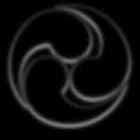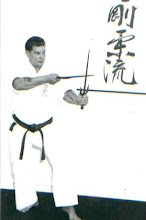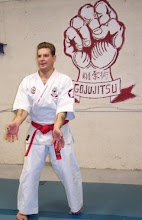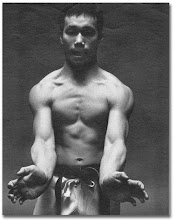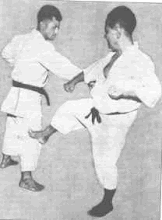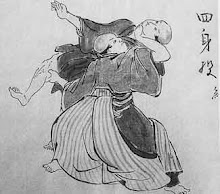 Starting our known leniage with Masters Wai XinXian and Seisho Arakaki born 1840 - died 1920, who was the original teacher of the Okinawan Master Kanryo Higashionna, born March 10,1853 51? - died December 23,1915, before he traveled to China, we later find our crane connection in the Fukien province in a city called fuzhow .
Starting our known leniage with Masters Wai XinXian and Seisho Arakaki born 1840 - died 1920, who was the original teacher of the Okinawan Master Kanryo Higashionna, born March 10,1853 51? - died December 23,1915, before he traveled to China, we later find our crane connection in the Fukien province in a city called fuzhow . 

While living in Fuzhow Higashionna trained at the Kojo Dojo at the Okinawan ghetto under Masters Kojo, Iwah, and Wai XinXian, later meeting and beginning his training with White Crane “Whooping Crane,” master Xie ZhongXiang, aka RyuRu Ko, born July 1852 - died February 1930. Ryu Ruko was a student of Pan Yuba, who's teacher was Lin SiXian.

Ryu Ruko's office.

Ryu Ruko's dojo.

Ryu Ruko's Grave.

Ryu Ruko's Grand Sons.
 Higashionna's top student and GoJu Ryu founder Chojun Miyagi, born April 5,1888 - died October 8, 1953 , continued to study after his teachers death.
Higashionna's top student and GoJu Ryu founder Chojun Miyagi, born April 5,1888 - died October 8, 1953 , continued to study after his teachers death. 
 Miyagi befriended the Chinese tea merchant Go Kenki, born 1887 - died 1940, who had relocated from China to Naha Okinawa. Go Kenki was a master of White Crane. The two masters formed a study group with other key martial artists, exchanging knowledge. Later, on two occaisions, 1915 and 1936, Go Kenki accompanied Miyagi on his trips to Fuchow as an interpeter.
Miyagi befriended the Chinese tea merchant Go Kenki, born 1887 - died 1940, who had relocated from China to Naha Okinawa. Go Kenki was a master of White Crane. The two masters formed a study group with other key martial artists, exchanging knowledge. Later, on two occaisions, 1915 and 1936, Go Kenki accompanied Miyagi on his trips to Fuchow as an interpeter.Here is a clip of Crane Style San Jan The predessesor of San Chin Kata
Here are more examples of San Jan.
Can the reader spot any moves here in Bafen that may have influenced GoJu Kata?
How about here?
Various masters adapted Crane kata into their curriculum often known as Hakutsuru meaning White Crane.
Often the various versions of Crane form would go by various names.
Here is Matayoshi KoBuDo and KinGaiRyu KoDoKan Grand Master, Shinpo Matayoshi, born December 27, 1921 - died September 7, 1997, performing the kata Hakkucho that he learned from Go Kenki

Japanese GoJu Kai founder Yoshimi "Gogen" Yamaguchi composed Genkaku 玄鶴 Seen performed in this picture by his son Hirofumi "Goshi" Yamaguchi, the current head of the Japanese GoJu Kai.
Gen means "deep, profound, dark, black, mysterious, obscure" Kaku means "crane"; Gen-kaku can thus be translated as Mysterious Crane or Black Crane.

Lastly, Grand Master Peter Urban, born August 14, 1934 - died April 7, 2004,
composed Gesaku Sho and Gesaku Dai katas as the Crane forms indegenous to USA / Urban GoJu, seen here being performed by yours truly.


















